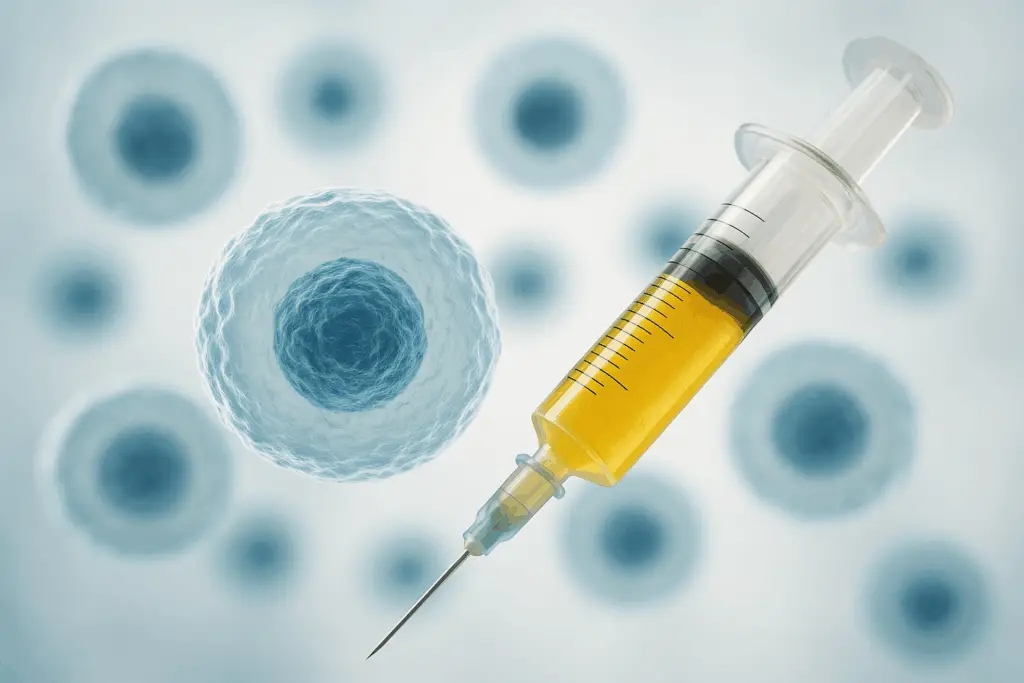Regenerative Therapy for Knee and Hip Pain: Why Adipose Stem Cells Work Best
Are you tired of knee pain, hip pain, or ongoing joint pain that limits your ability to move and enjoy life? You’re not alone. Millions of people search for joint pain relief every month, hoping for more than just temporary solutions like medication or surgery. Many treatments provide short-term comfort but fail to address the root problem.
That’s where regenerative therapy changes the game. This innovative approach uses your body’s natural ability to heal, restoring joint function and reducing pain. In this guide, you’ll discover why adipose-derived stem cell therapy is the most effective long-term solution, how it compares to PRP injections, and why it’s becoming the preferred choice for people seeking lasting joint pain relief.
What Is Regenerative Therapy for Knee and Joint Pain?
Regenerative therapy is a cutting-edge medical approach that repairs and regenerates damaged tissue instead of just masking symptoms. By leveraging cells from your own body, these therapies restore joint health naturally and promote healing where traditional treatments fall short.
The most common regenerative options for joint pain include:
Platelet-Rich Plasma (PRP) injections for knee and hip pain
Bone marrow stem cells
Umbilical cord cells
Adipose-derived stem cells (from your own fat)
While each method has benefits, not all provide the same level of improvement or durability. Let’s explore these options in detail.
PRP for Knee and Hip Pain: Short-Term Relief
PRP injections for knee pain or other joints involve taking your own blood, concentrating the platelets, and injecting them into the problem area. Platelets contain growth factors that accelerate the body’s repair process, making PRP popular among athletes and those with mild to moderate injuries.
However, PRP typically provides relief for 6–12 months, and most patients need multiple treatments for ongoing benefit. It’s a great first step for people with early arthritis or sports injuries, but if you’re looking for a longer-lasting solution, PRP alone may not be enough.
Learn more on our PRP Therapy page and explore its benefits and limitations.

Why Adipose Stem Cell Therapy Is the Gold Standard
For sustained improvement in knee pain and hip pain, adipose-derived stem cell therapy is unmatched. Here’s why:
Higher Cell Count: Fat tissue contains far more stem cells than bone marrow, providing millions of cells in a single procedure.
Durability: Patients often experience significant relief for 2 years or more, with continued benefits beyond that.
Autologous Source: Using your own fat cells eliminates risks of rejection or disease transmission.
Proven Safety and Experience: With over a decade of successful use, adipose stem cell therapy is a safe and effective choice.
Visit our Adipose Stem Cell Therapy page to learn more.
How Stem Cells Repair Damaged Knees and Joints
Stem cells from fat do more than just reduce knee pain and joint pain. They:
Calm inflammation, reducing swelling and discomfort.
Stimulate cartilage regeneration, slowing the progression of arthritis.
Enhance joint function, improving mobility and quality of life.
Numerous studies, including those on PubMed, confirm that stem cell therapy can successfully reduce symptoms and restore joint health in osteoarthritis and sports injuries.
Why Not Bone Marrow or Umbilical Cells?
Bone Marrow Stem Cells
While bone marrow was an early source for stem cells, it produces fewer cells than fat. To reach therapeutic levels, bone marrow stem cells often need lab expansion, which adds cost and time.
Umbilical Cord Cells
Umbilical cells, taken from donors, present two challenges:
They’re not your own cells, which increases immune reaction risk.
High expense: Adequate dosing requires large quantities, making treatment costly.
How Many Cells Are Enough?
For optimal results, research shows millions of cells are needed to repair joint tissue effectively. Fat tissue makes this possible in a single procedure without lab expansion, making it the most practical and powerful solution.
Why Choose Dr. Bill Johnson?
When it comes to regenerative medicine, experience matters. Dr. Bill Johnson has over 12 years of expertise using adipose-derived stem cells for joint pain treatment. At Innovations Stem Cell Center, we prioritize patient safety, cutting-edge techniques, and individualized care plans.
Frequently Asked Questions (FAQ)
Yes. Studies show that adipose-derived stem cells can significantly reduce pain and improve function in knee osteoarthritis, often delaying or avoiding the need for joint replacement.
How long does knee pain and joint pain relief last?
Most patients experience improvement for 2 years or more, with many reporting continued benefits beyond that.
Is the procedure painful?
Stem cell therapy is performed under local anesthesia and is generally well-tolerated. Most patients return home the same day.
How is this different from PRP injections?
PRP offers short-term benefits for mild cases, while stem cell therapy provides long-term joint regeneration and pain relief.
For more FAQs, visit our Patient Information page.
Take the First Step Toward Pain-Free Living
Don’t let knee pain or hip pain control your life. Regenerative therapy with adipose stem cells offers long-term relief and improved mobility.
Schedule Your Consultation today and reclaim your active lifestyle.
Supporting Research
Key Points for Patients:
PRP injections help short-term; adipose stem cells last longer.
Millions of stem cells are needed—fat is the best source.
Bone marrow and umbilical cells have major limitations.
Dr. Johnson brings 12+ years of expertise in regenerative therapy.





